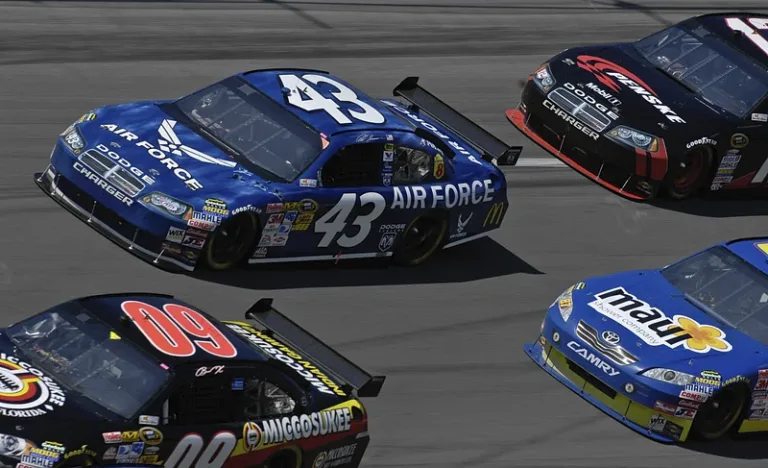The famous racing series NASCAR is facing constantly changing regulations. If we talk about the routing and assembly of its exhaust system, it has become more challenging due to the Sprint Cup regulations. Maintaining reliability while not increasing the weight of NASCAR exhaust is not a cakewalk.
The development of the exhaust is considered secondary to the development of the engine as it has open regulations. But that doesn’t lower the requirement of a robust exhaust system. Let’s discuss the NASCAR exhaust system in detail in this article.
Why is Nascar Exhaust Significant?
Undoubtedly, the exhaust system is one of those key fields where the scope of performance depends. It either improves performance or degrades it depending on the exhaust’s design. The reason is that the exhaust gas’ dynamics vary with any variation in the geometry.

Moreover, if they are not appropriately designed, the NASCAR exhaust system can cause a significant power reduction. The primary goal while designing the NASCAR exhaust is to minimize the pressure losses throughout the system.
Nascar Exhaust Design
Designing a winning NASCAR exhaust system can be pretty challenging. This system is designed with the help of several parts, like the headers, the tailpipe, the catalytic converter, and the muffler. The purpose of employing each piece is to help the car perform its best.
Improper design of the ovalized sections, due to regulatory constraints, can harm power. Specific racing series have purposefully utilized oval shapes to achieve performance elsewhere while compromising the engine’s performance.
Many racing series have exhausts beginning as tubular or round-shaped ones and keeping the shape similar till the system’s exit. But the same changes to an ovalized regulated section regarding the NASCAR series.

Considering the regulations for cross-sectional areas, the designing of oval-shaped exhaust considers the real hydraulic diameter. For this, usually, a tapering transition piece is created with the material’s press forming into the desired shapes.
The relative longevity of the ovalized portion could considerably aggravate the pressure losses. For this reason, it is imperative to meticulously craft the transition sections, considering the cross-sectional area variations within the system’s geometry. This approach is necessary for optimizing the performance of the system.
If the alteration in the cross-sectional area gets too abrupt, it can cause a potential issue of flow separation along the walls. This, in turn, can lead to turbulent zones and a substantial increase in pressure loss within this transitional section. Let’s discuss the same thing in more detail in the following section.
Nascar Exhaust’s Exit Section
The exhaust exit section is strategically reinforced, creating a division within the flattened tube. This effectively transforms it into two or three smaller tubes. This can significantly lower the overall hydraulic diameter.
Every time the flow diameter changes effectively or actually, there is a pressure loss independent of the fact that the area is increasing or decreasing. Measurement of such loss is possible only by specific techniques like actual measurement or CFD.
Suppose the exhaust’s round section gets flatter; the area of the duct gradually increases due to the tapered section. If this increase is too sudden, there will be areas of recirculating flow as the flow can separate from the system’s walls.
Converging sections inherently raise pressure losses due to escalating flow velocities. Conversely, diverging tapered exhaust sections experience significant pressure loss from flow separation.
Through careful optimization at each transition point, we can considerably minimize pressure losses. Consequently, it enhances performance.
Nascar Exhaust Boom Tube
A NASCAR’s boom tube is an effective device for directing the exhaust gasses toward the rear side of the car from the engine.

It offers an easy yet efficient means to increase the car’s performance while reducing drag and increasing speed.
Nascar Exhaust Sound
The NASCAR sport is exciting due to several factors. One big reason among them is the deafening sound roaring around the track that NASCAR engines produce.
Since NASCAR does not employ many mufflers, nor does it have large engines, its engines are excessively loud & booming. You can hear their sound miles away as they usually lie somewhere between 100 dB and 400 dB.
NASCAR’s signature sound isn’t suitable for some people. NASCAR cars are much louder than production cars because of the absence of exhaust pipes. A NASCAR car does not employ a muffler as it lowers the flowing exhaust amount and thus hinders the power.
The enormous exhaust that NASCAR engines produce is troublesome for spectators and drivers alike. You must hear the best-sounding Exhaust for Honda NSX!
The Final Word

The detailed design of NASCAR exhaust systems reveals a fascinating balance between regulatory constraints and aerodynamic performance. By optimizing transitions, carefully considering cross-sectional changes, and addressing the challenges of diverging and converging sections, engineers and teams can unlock the full potential of these systems.
As NASCAR continues to evolve, so do the innovations in exhaust design, pushing the boundaries of speed and efficiency in this exhilarating racing sport. Does this create a curiosity about the speed of Nascar? Well, you should then know how much horsepower a NASCAR engine has!
